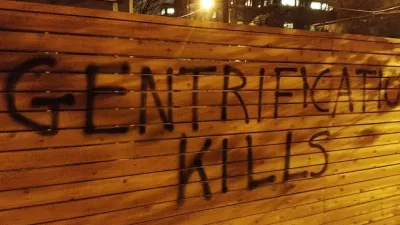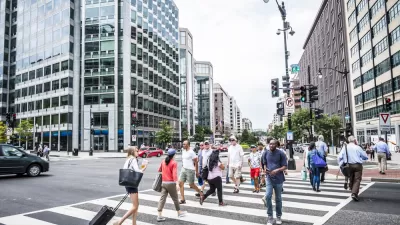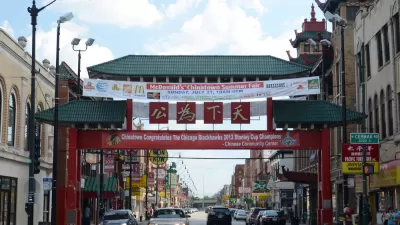When gentrification takes center stage, neglected places facing poverty, segregation, and disinvestment are overlooked.

Jason Segedy, planning director of Akron, Ohio, considers the decline of American cities by reflecting on Alan Mallach's book The Divided City. Segedy says that much of the focus is on revitalization when it should be on “displacement by decline.”
Activists and academics often point to the impacts of gentrification, even when its meaning is not entirely clear any longer, says Segedy. "We hear far less about the primarily black middle class residents fleeing previously stable urban neighborhoods for the suburbs each year (displacement by decline), while the poor are left behind in crumbling communities, trapped in concentrated generational poverty."
In thinking about how to move forward, Segedy again draws from Mallach. "In order to become effective change agents, Mallach argues that city leaders must step back from daily crises, difficult as that sometimes is, and think about systemic issues and power structures in their communities." Segedy adds that change needs to happen at the local level, without expectations that the federal government will provide the solutions.
He also is critical of responses across the political spectrum, nothing that the right has demonstrated little interest in the future of cities. "The political left, meanwhile, spellbound by the Dada performance art that bills itself as 'The Resistance' in this absurd age of Trump, staggers drunkenly between a wonky and bloodless urbanism, and an increasingly strident and unhinged leftism."
See also: Segedy's review of The Divided City from July 2018.
FULL STORY: Displacement by decline

Maui's Vacation Rental Debate Turns Ugly
Verbal attacks, misinformation campaigns and fistfights plague a high-stakes debate to convert thousands of vacation rentals into long-term housing.

Planetizen Federal Action Tracker
A weekly monitor of how Trump’s orders and actions are impacting planners and planning in America.

In Urban Planning, AI Prompting Could be the New Design Thinking
Creativity has long been key to great urban design. What if we see AI as our new creative partner?

Massachusetts Budget Helps Close MBTA Budget Gap
The budget signed by Gov. Maura Healey includes $470 million in MBTA funding for the next fiscal year.

Milwaukee Launches Vision Zero Plan
Seven years after the city signed its Complete Streets Policy, the city is doubling down on its efforts to eliminate traffic deaths.

Portland Raises Parking Fees to Pay for Street Maintenance
The city is struggling to bridge a massive budget gap at the Bureau of Transportation, which largely depleted its reserves during the Civd-19 pandemic.
Urban Design for Planners 1: Software Tools
This six-course series explores essential urban design concepts using open source software and equips planners with the tools they need to participate fully in the urban design process.
Planning for Universal Design
Learn the tools for implementing Universal Design in planning regulations.
Gallatin County Department of Planning & Community Development
Heyer Gruel & Associates PA
JM Goldson LLC
City of Camden Redevelopment Agency
City of Astoria
Transportation Research & Education Center (TREC) at Portland State University
Jefferson Parish Government
Camden Redevelopment Agency
City of Claremont





























